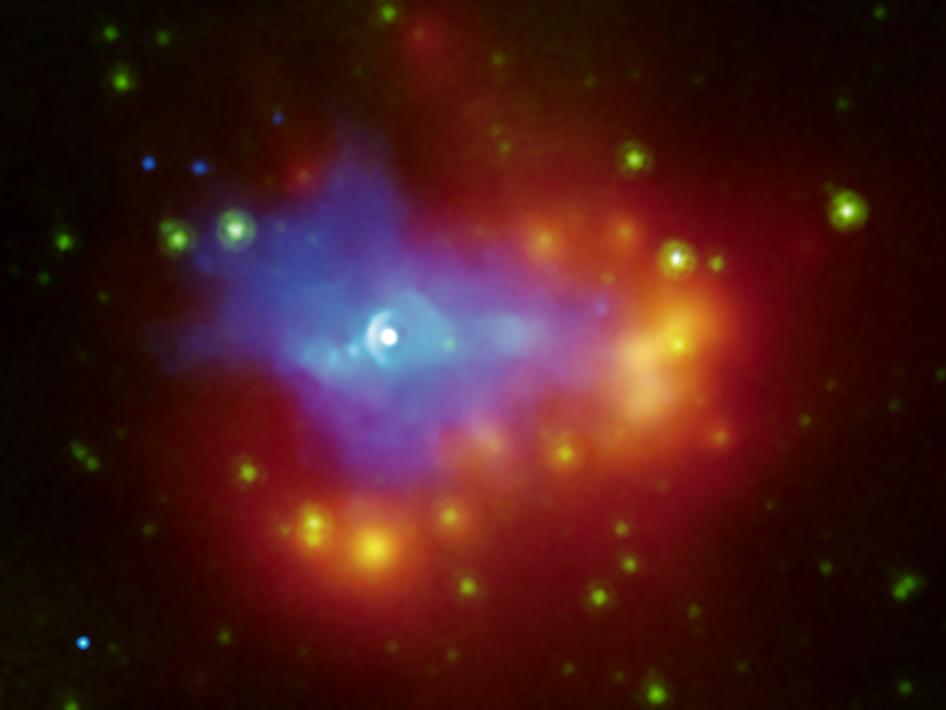
 Ashes to Ashes, Dust to Dust
Ashes to Ashes, Dust to Dust
This new composite image from NASA's Chandra X-ray Observatory and Spitzer Space Telescope shows the dusty remains of a collapsed star, the dust from which is flying past and engulfing a nearby family of stars. Scientists believe the stars in the image are part of a stellar cluster in which a supernova exploded. Material ejected in the explosion now blows past these stars at high velocities.
In this image of G54.1+0.3, X-ray data from Chandra are shown in blue, and data from Spitzer in green (a shorter wavelength) and red-yellow (a longer one). The white source near the center of the image is a dense, rapidly rotating neutron star, or pulsar, all that remains of a core-collapse supernova explosion. The pulsar generates a wind of high-energy particles -- seen in the Chandra data -- that expands into the surrounding environment, illuminating the material ejected in the supernova explosion.
The unique environment into which this supernova exploded makes it possible for astronomers to observe the condensed dust from the supernova that is usually too cold to emit in the infrared.
Image Credits: X-ray: NASA/CXC/SAO/T. Temin et al. Infrared: NASA/JPL/Caltech
